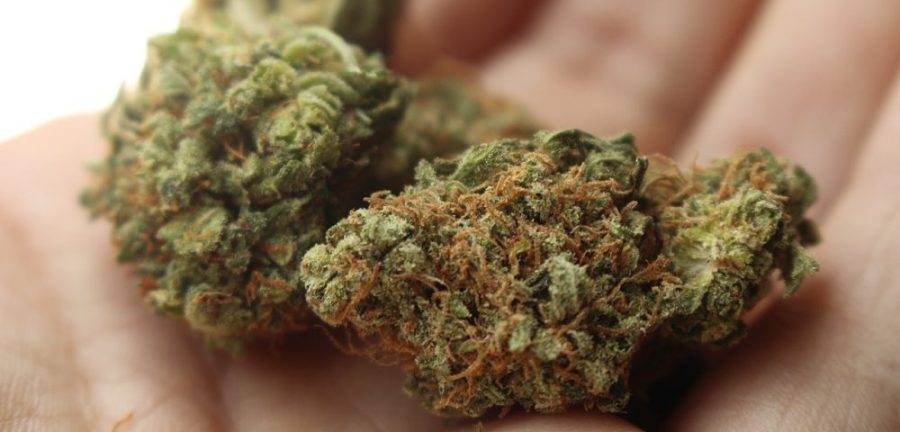The number of “cannabis-involved” traffic fatalities in Colorado drop
“The presence of a cannabinoid does not necessarily indicate recent use of marijuana or impairment,” claimed CDOT.
Last year, fewer “cannabis-involved fatalities” occurred on Colorado’s roads. According to data released in a report from the Colorado Department of Transportation (CDOT), “cannabis-involved traffic fatalities” in The Centennial State plummeted in 2017.
Since 2015, CDOT claims that Colorado State Patrol has issued in excess of 1,500 cannabis-related citations. However, in comparison with data gleaned from the first quarter of 2016, cannabis DUI citations dropped 33.2 percent during the same period last year.
On the other hand, traffic deaths involving motorists who were tested positive for cannabis (“cannabis-related traffic fatalities”) increased by 11 percent in 2017. These trends demonstrate divergence, which indicates the challenges of determining a blaming factor for traffic crash incidents associated with cannabis intoxication.
So, based on this information, has cannabis legalization caused a safety concern for the U.S. State with the longest history of state-licensed recreational weed sales?
Let’s take a closer look at what CDOT data can tell us about the link between legal weed and “cannabis-involved” or “cannabis-related” traffic fatalities in Colorado.
CDOT report spotlights reduction in Colorado’s “cannabis-involved” traffic fatalities
Legal recreational cannabis sales kicked off in Colorado back in the year 2014. The 75 drivers who were involved in fatal traffic accidents and tested positive for cannabinoids (the plant’s active compounds, such as THC or CBD) during that same year is a slightly smaller number than the following year. CDOT refers to these incidents as “cannabis-involved fatalities.”
In 2015, 98 cannabinoid-positive traffic fatalities were reported. This figure crept up to 125 in 2016 and it swelled to 139 in 2017. Despite this, the CDOT touched upon the fact that cannabinoids may stay in the system for days, or even weeks, after a user is impaired.
“The presence of a cannabinoid does not necessarily indicate recent use of marijuana or impairment,” claimed CDOT.
Colorado State law allows jurors to conjecture that someone is “impaired” by cannabis if the THC blood concentration is five (or more) nanograms per milliliter. Since the year 2014, the incidents reported by CDOT were at or above this limit.
Described as “cannabis-involved fatalities” by CDOT, incidents in which the motorist was deemed “impaired” increased from 19 in 2014 to 52 just two years later. Last year, the number of cannabis-involved fatalities dropped to 35.
Regular cannabis consumers are capable of safely operating motor vehicles
Although Colorado State law concludes that a person is in fact “impaired” if they have five nanograms of the psychoactive cannabis compound (THC) present in their system, frequent cannabis consumers may build a tolerance to the mind-altering cannabinoid, meaning that they could potentially operate a vehicle safely while under the influence of cannabis.
There is also a lack of scientific evidence to prove that THC blood levels are a direct indication of cannabis impairment.
“Whereas the impairment effects for various concentration levels of alcohol in the blood or breath are well understood, there is little evidence available to link concentrations of other drugs to driver performance,” the National Highway Traffic Safety Administration reports.
Consequently, “specific drug concentration levels cannot be reliably equated with a specific degree of driver impairment.”
This was backed by the AAA Foundation for Traffic Safety. “A quantitative threshold for per se laws for THC following cannabis use cannot be scientifically supported,” the foundation wrote in a 2016 report.
Report on cannabis-related fatalities in Colorado stir-up uncertainty
The prospect of a motorist substituting alcohol for cannabis is one that makes the issue slightly more complex. Compared to weed, alcohol’s influence on driving ability is significantly different. Alcohol-fueled drivers will be much less capable of getting behind the wheel as opposed to someone who has used cannabis.
Now, let’s just imagine for a moment that more people swap the bottle for the green stuff. This would result in more “high” drivers taking to the open road and fewer drunk drivers taking that risk, ergo the outcome could be an overall reduction in traffic fatalities.
In 2014, alcohol-related traffic fatalities involving motorists who tested positive for blood alcohol concentrations to the amount of/exceeding the legal threshold of 0.08 percent totaled 160. This figure increased to 171 in 2017, when the total number of traffic fatalities in Colorado escalated from 488 to 648.
While some people may put this surge in traffic fatalities down to cannabis legalization, it is important to remember that nationwide traffic fatalities have been increasing over the last few years. Furthermore, figures started creeping up even before legal weed in Colorado was given the thumbs up.










